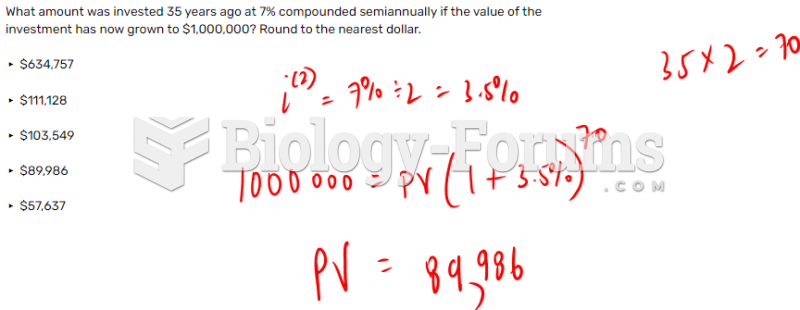This topic contains a solution. Click here to go to the answer
|
|
|
Did you know?
Intradermal injections are somewhat difficult to correctly administer because the skin layers are so thin that it is easy to accidentally punch through to the deeper subcutaneous layer.
Did you know?
The first oral chemotherapy drug for colon cancer was approved by FDA in 2001.
Did you know?
Signs and symptoms of a drug overdose include losing consciousness, fever or sweating, breathing problems, abnormal pulse, and changes in skin color.
Did you know?
In the United States, an estimated 50 million unnecessary antibiotics are prescribed for viral respiratory infections.
Did you know?
Approximately 500,000 babies are born each year in the United States to teenage mothers.
 The slight (5 microsecond) difference in the firing of the companion cylinders is enough time to ...
The slight (5 microsecond) difference in the firing of the companion cylinders is enough time to ...
 The age-adjusted rate of melanoma, a deadly form of skin cancer, from 1973 to 2000. Over that time p
The age-adjusted rate of melanoma, a deadly form of skin cancer, from 1973 to 2000. Over that time p





